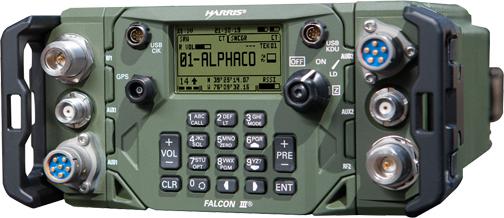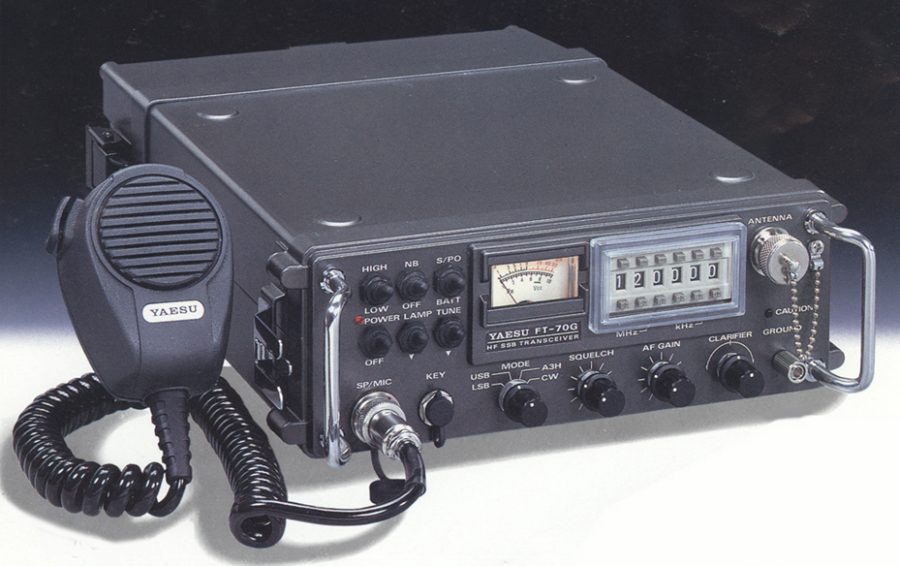 Earlier today, I stumbled upon a very unique transceiver in Universal Radio archives: the Yaesu FT-70G.
Earlier today, I stumbled upon a very unique transceiver in Universal Radio archives: the Yaesu FT-70G.
Here’s the description from Universal:
The Yaesu FT-70G is a portable HF transceiver covering 2 to 30 MHz transmit. Receive is from 500 kHz to 30 MHz. Frequency selection is via BCD switches to 100 Hz. There is a clarifier for fine tuning. Optional FNB-70 NiCad Battery. Please note that the optional 10F-2.4DL filter is required for LSB opeation.
The Yaesu FT-70F is similar, but is a channelized fixed version offering up to 11 frequencies.
Two hours ago, I was not aware that the FT-70G existed. Now? I want one!
I’m a real sucker for vintage rugged field radio gear, so I never discovered the FT-70G until today. Turns out, they’re relatively rare. A little light research reveals that it’s a highly-desired transceiver in the world of HF Packers–those radio enthusiast who like “manpack” commercial and military gear.
The FT-70G has a distinct military look and feel with the BCD switches to change frequency, rugged toggle switches, chassis extensions to protect the front panel, and attached screw-on connector caps.
What’s really surprising is that the FT-70G has a general coverage receiver (500 kHz to 30 MHz). Admittedly, it would not be fun band-scanning with those BCD switches…but still!
This website has a number of photos. They also have a product description likely from the original Yaesu/Vertex Standard FT-70G description:
“The FT-70 series HF field portable manpack transceivers are designed to provide reliable communications under rugged conditions in the military and commercial environment. The frequency synthesized, all solid-state circuitry and die-cast anodized aluminum enclosure and battery pack make a highly portable, weatherproof station. Flexible operation for optimum communications under a wide range of propagation conditions are assured by SSB (USB, LSB), semi break-in CW, AM, or audio interfaced Data modes. All controls, antenna, and interface ports are available and selectable via the front panel for maximum effectiveness and ergonomics in field, base, and manpack applications. The companion antenna tuner FC-70 is compatible with walking manpack, field portable, or base configurations. The highly effective vertical tripod mount antenna system YA-70 is deployed and stowed easily and quickly, pulling double duty by converting to manpack whip while on manuevers. High quality handset YH-70 provides communications privacy and clarity.”
Again, check out the excellent photos of the full manpack kit.
As I researched pricing, I discovered this FT-70R with accompanying FC-70M antenna tuner on eBay right now with only 6 hours left of bidding:
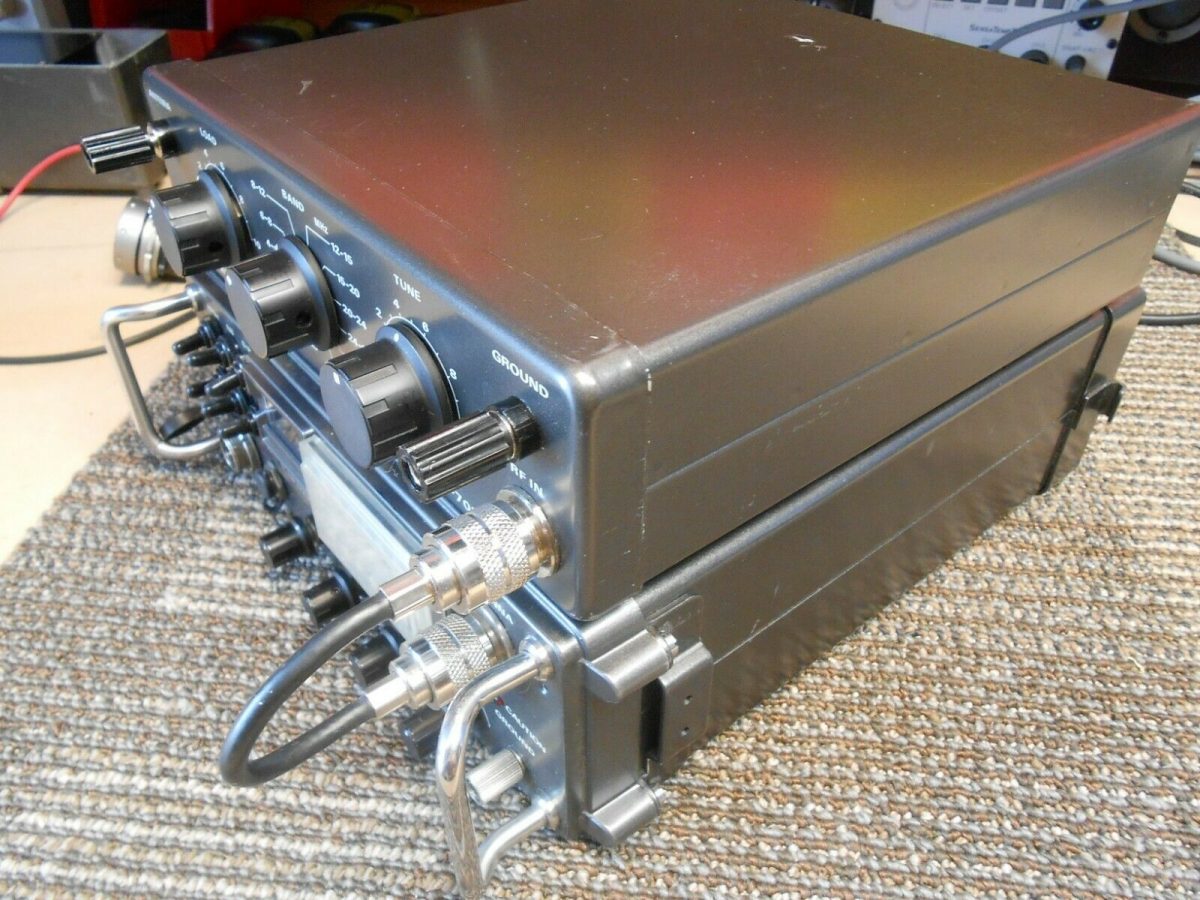
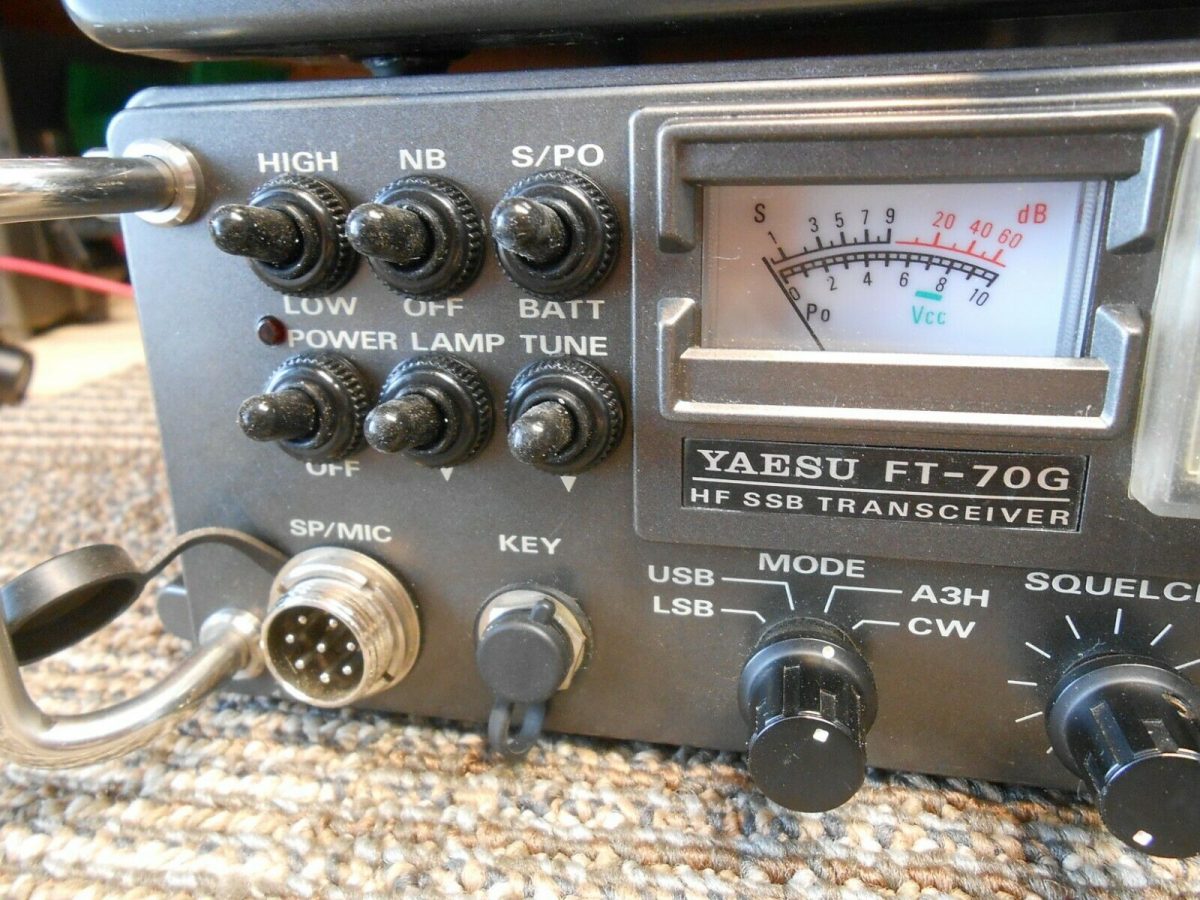
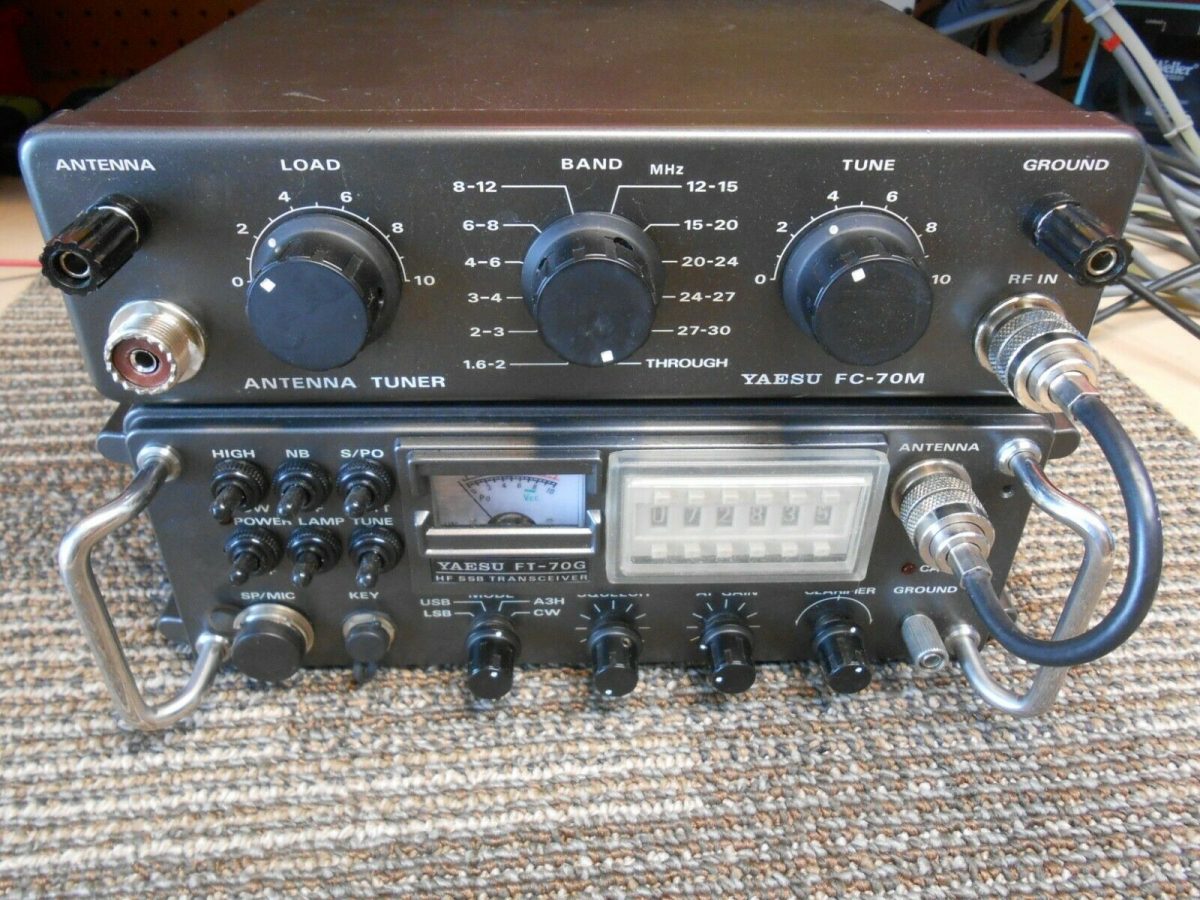 At time of posting, the bids are at $520. I fear this will soar well above my comfort level before bidding ends. (Like I need another field radio anyway, right?)
At time of posting, the bids are at $520. I fear this will soar well above my comfort level before bidding ends. (Like I need another field radio anyway, right?)
Post readers: Please comment if you’re familiar with the FT-70G and especially if you’ve ever owned one. I’d love to hear about your experience with this unique rig.


